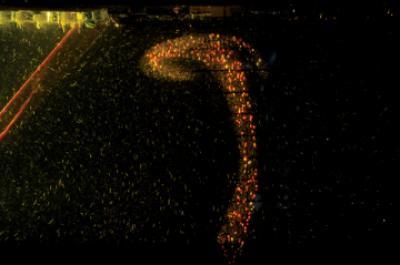Alexandria, VA – One of the greatest controversies in science is what's underneath the Yellowstone supervolcano. The controversy surrounds a unique relationship between a mantle plume (like the one that powers Hawaiian volcanoes) and the subduction zone off the Washington-Oregon coast. Cutting-edge research using a common kitchen ingredient is explored in the latest issue of EARTH Magazine.
Recently published research explores this problem in 3-D, using a model created with corn syrup, fiberglass and a series of hydraulic pistons. What the scientists saw was a plume sliced in half by the subducting plate. Before this research, different scientific teams had only investigated the subducting tectonic plate or the mantle plume, but not both at the same time.
The resulting model of a bifurcated mantle plume potentially answers key questions about the Yellowstone supervolcano. Read about how these results impact volcano research in Washington, Oregon, Montana, Wyoming and the South Pacific in the July issue of EARTH Magazine: http://bit.ly/153lVat. For complete access – including to see the corn syrup apparatus subscribe to Earth Magazine at: http://www.earthmagazine.org/digital.

A corn syrup mantle plume rises near the subducting plate, which induces fluid flow that distorts and deforms the plume as it rises toward the surface.
(Photo Credit: Kelsey Druken)
Source: American Geosciences Institute